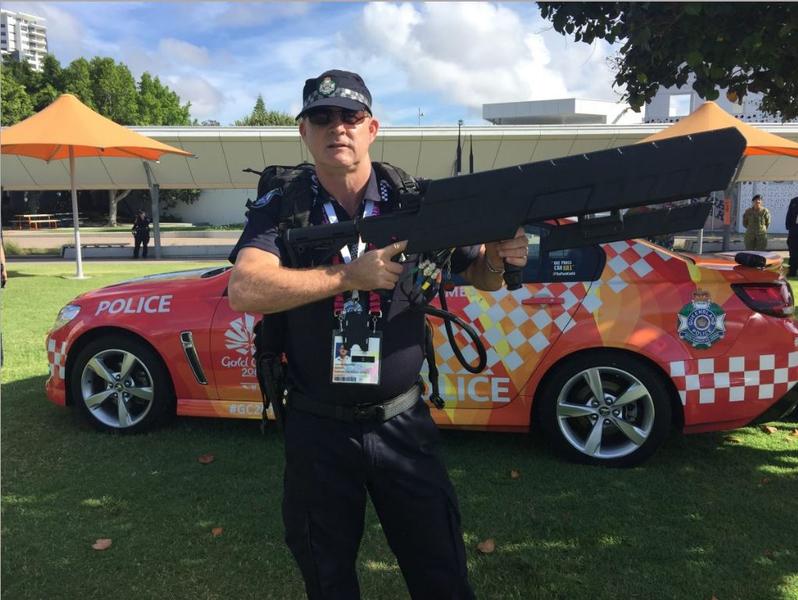CASA running drone detection trial at major airports and Sydney Harbour
- 28 May, 2019 16:37

The Civil Aviation Safety Authority (CASA) is using drone detection equipment at major airports and events around the country to monitor drone use and enforce safety rules.
The authority says it detected a number of drones being flown in breach of regulations at events in Canberra and on the Gold Coast earlier this year and that “enforcement action is being pursued”.
It is also conducting a “passive drone surveillance trial” to monitor the skies around a number of major mainland capital city aerodromes, particularly around the airport boundaries and approach and departure paths. The passive trial is also running at Sydney Harbour, a known drone hotspot.
“The surveillance equipment permits CASA to identify the location of the airborne drone and its controller, with capability to easily deploy a mobile version of the surveillance equipment,” CASA spokesperson Peter Gibson told CIO Australia.
The authority has previously said the technology also provides the serial number or ID of the drone where available.
“Specific details about the surveillance activities are not being disclosed publicly in order to ensure the operational integrity of the trials,” Gibson added.
In a recent update, the authority’s CEO and director of aviation safety Shane Carmody pointed to a to a recent Victorian Magistrates court case, in which a man was convicted of three drone offences – commercial operations without holding a remotely piloted aircraft operator’s certificate and for two instances of operating over a populous area at a height from which the drone would not have been able to safely clear the area in the event of a component failure. Fines and costs totalled more than $1500.
“CASA continues to issue penalties where there is evidence of drone safety regulation breaches, with recent penalties in excess of $1000,” Carmody said.
Unless CASA issues the operator a specific approval, drones must not to be operated within 5.5 kilometres of a controlled aerodrome, over Sydney Harbour, or over people or populated areas such as sporting events, concerts and public gatherings.
Since the beginning of the year, CASA has issued 26 aviation infringement notices to people who have unlawfully operate a drone, it revealed today.
Drone fliers that breach regulations are a growing concern for CASA, which in March revealed it had issued a total of 10,999 remote pilot licences and 1504 remotely piloted aircraft (RPA) operator certificates.
To help tackle the issue, the authority engaged contractor Counter Drone Solutions to carry out the monitoring as part of a trial during the first half of this year.
Counter Drone Solutions is run by former Australian Federal Police officer John Hildebrand, who led the anti-drone effort at the 2018 Commonwealth Games.

“The data collected about drone operations will be used to inform education and information strategies, which is important in the lead up to the introduction of mandatory drone registration and accreditation in the second half of 2019,” said Carmody.
We jammin’
CASA’s current surveillance activities stop short of forcibly landing the drones found in breach of regulation. While drone-jamming technology – which hijacks the frequencies used by an operator to typically land the drone or return it to the point where it was launched – is available, its use is heavily restricted.
The use of GPS jammers is illegal in Australia – punishable by a fine of up to $270,000 and up to five years in prison if use endangers the safety of another person.
Last month, Australian Federal Police sought ongoing authorisation from the Australian Communications and Media Authority (ACMA) for exemption from rules governing wireless interference. Last year the ACMA issued temporary authorisation for the AFP to employ drone-jamming devices as part of providing security for the Invictus Games in Sydney.
CASA in 2017 launched an app – Can I fly there? – to help drone pilots remain within the law.
Drone-makers are also responding to the issue of dangerous flying. Major manufacturer DJI announced last week it was adding its airplane and helicopter detector technology in all new consumer drones weighing more than 250 grams from 2020.
DJI’s AirSense technology receives Automatic Dependent Surveillance Broadcast (ADS-B) signals from nearby airplanes and helicopters and warns drone pilots if they appear to be on a collision course. In Australia all aircraft must be fitted with ADS-B equipment, with few exceptions.

